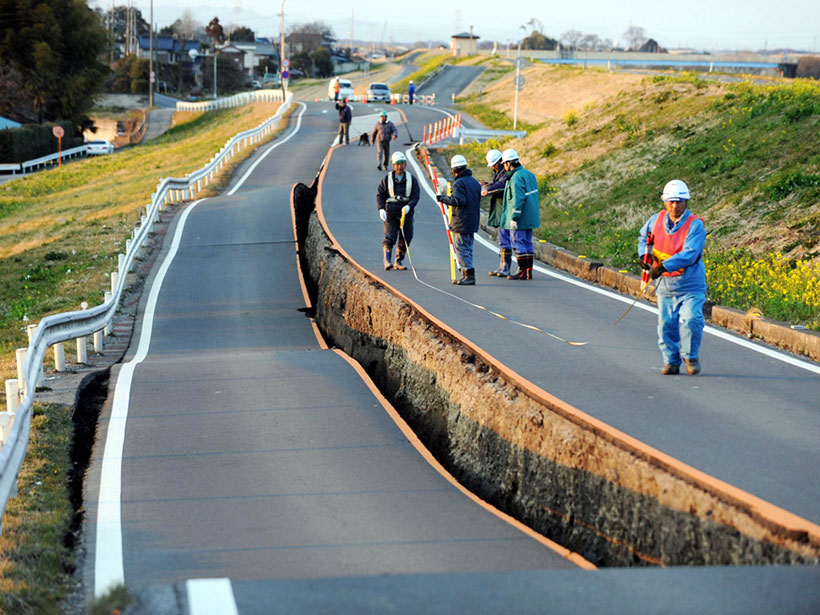Source: Journal of Geophysical Research: Solid Earth
During an earthquake, Earth’s crust moves, or slips, along fractures in rock called faults. These movements can be detected and recorded by geophysical instruments located at various locations on Earth’s surface. Recordings from geophysical instruments have a different orientation relative to the earthquake’s epicenter and therefore record a different aspect of a fault slip. An important problem in seismology is reconciling these different measurements to determine the true orientation of an earthquake’s many fault slips, as well as the large-scale stresses that create them.
The process of determining the distribution of fault slips that creates a given set of geophysical observations is called slip inversion. In the computer era, it has traditionally been accomplished by a variety of least squares fitting routines that attempt to match possible slip distributions to the observed data. However, this technique faces a number of challenges, including ensuring a physically plausible solution, properly handling complex observational uncertainties, and determining a slip distribution that varies spatially.
To address these issues, modern slip inversion techniques have begun to use a probabilistic approach using Markov chain Monte Carlo (MCMC) methods. A traditional MCMC approach overcomes many of the issues encountered by an optimization technique like least squares but can face difficulty when encountering the severely nonuniform distribution of seismic observations. To address this, Tomita et al. developed a transdimensional MCMC technique. In a transdimensional approach, the number of model parameters is not predetermined but, rather, emerges naturally from the complexity of the input data.
The authors created their approach from the reversible-jump MCMC (rj-MCMC) technique, an existing framework for carrying out transdimensional MCMC calculations. To evaluate their approach, they simulated the effects of an earthquake located in an undersea trench within several hundred kilometers of various geodetic observation sites. They considered three scenarios: two with a mix of onshore and offshore observation sites and one with only onshore locations.
In the mixed scenarios, the rj-MCMC technique and the least squares approach both reproduced the slip distribution reasonably. However, only the rj-MCMC calculation could deal with the more asymmetric scenario of only onshore observations.
Finally, they applied the rj-MCMC method to observational data of the 2011 Tōhoku-oki earthquake off Japan in the Pacific Ocean. Their result is broadly similar to past work on this event but provides better expression of the most substantial slips. Overall, the transdimensional, probabilistic approach appears to be a promising tool for future earthquake studies. (Journal of Geophysical Research: Solid Earth, https://doi.org/10.1029/2020JB020991, 2021)
—Morgan Rehnberg, Science Writer
Citation:
Rehnberg, M. (2021), A new approach to calculate earthquake slip distributions, Eos, 102, https://doi.org/10.1029/2021EO159305. Published on 04 June 2021.
Text © 2021. AGU. CC BY-NC-ND 3.0
Except where otherwise noted, images are subject to copyright. Any reuse without express permission from the copyright owner is prohibited.

